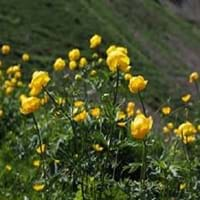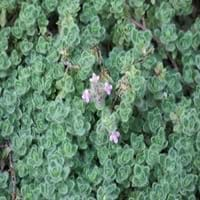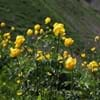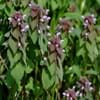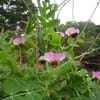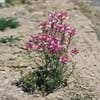Life Span
Perennial
Perennial
Type
Herbaceous Perennial
Herbs
Origin
Central America
Europe, Mediterranean, Northern Africa, Asia
Types
Trollius laxus , Trollius asiaticus , Trollius pumilus
Not Available
Number of Varieties
Not Available
Habitat
Temperate Regions
Cultivated Beds
USDA Hardiness Zone
3-8
Not Available
AHS Heat Zone
12 - 1
11-3
Sunset Zone
A1, A2, A3, H1, H2, 1a, 1b, 2a, 2b, 3a, 3b, 4, 5, 6, 7, 8, 9, 10, 11, 12, 13, 14, 15, 16, 17, 18, 19, 20, 21, 22, 23, 24
A2, A3, 1a, 1b, 2a, 2b, 3a, 3b, 4, 5, 6, 7, 8, 9, 10, 11, 12, 13, 14, 15, 16, 17, 18, 19, 20, 21, 22, 23, 24
Habit
Clump-Forming
Mat-forming
Flower Color
Orange, Yellow
Light Pink, Lavender
Flower Color Modifier
Bicolor
Bicolor
Fruit Color
Brown
Not Available
Leaf Color in Spring
Green, Gray Green
Sea Green, Gray Green
Leaf Color in Summer
Green, Gray Green
Sea Green, Gray Green
Leaf Color in Fall
Green, Gray Green
Sea Green, Gray Green
Leaf Color in Winter
Light Green
Light Green
Plant Season
Spring, Summer, Fall
Spring, Summer, Fall, Winter
Sunlight
Full Sun
Full Sun, Partial Sun
Type of Soil
Loam, Sand
Loam, Sand
The pH of Soil
Neutral
Acidic, Neutral
Soil Drainage
Well drained
Well drained
Bloom Time
Early Summer, Summer, Late Summer, Early Fall, Fall
Late Spring, Early Summer, Summer
Tolerances
Drought
Drought
Where to Plant?
Ground, Pot
Ground
How to Plant?
Divison
Divison, Seedlings
Plant Maintenance
Medium
Medium
Watering Requirements
Keep ground moist
Average Water Needs, Do Not over Water
In Summer
Lots of watering
Lots of watering
In Spring
Moderate
Moderate
In Winter
Average Water
Average Water
Soil pH
Neutral, Slightly Acidic, Slightly Alkaline
Acidic, Neutral
Soil Type
Clay, Loam
Loam, Sand
Soil Drainage Capacity
Poorly Drained
Well drained
Sun Exposure
Full Sun, Partial Sun
Full Sun, Partial Sun
Pruning
Prune after flowering, Remove damaged leaves, Remove dead branches, Remove dead leaves
Remove damaged leaves, Remove dead branches, Remove dead leaves
Fertilizers
All-Purpose Liquid Fertilizer, fertilize in spring
Fertilize every year
Pests and Diseases
Pest Free, Powdery mildew
Gray mold, Root rot
Plant Tolerance
Drought, Moisture
Drought
Flower Petal Number
Single
Single
Foliage Texture
Medium
Fine
Foliage Sheen
Matte
Matte
Attracts
Butterflies
Butterflies
Allergy
blisters, Burning sensation, Diarrhea, Irritation to intestines, Kidney Disease
Skin irritation
Aesthetic Uses
along a porch, deck or patio, Bog Garden, Borders, Landscape Designing, Mixed Border, small hedge, Wild gardens
Borders, Cottage Garden
Beauty Benefits
No Beauty Benefits
Not Available
Edible Uses
Sometimes
Yes
Environmental Uses
Air purification
Air purification
Medicinal Uses
Vitamin C
Antiseptic, Disinfectant
Part of Plant Used
Whole plant
Leaves
Other Uses
Traditional medicine
Used as a flavouring in food, Used as essential oil
Used As Indoor Plant
No
No
Used As Outdoor Plant
Yes
Yes
Garden Design
Cottage garden, Flower borders, Informal Garden, Showy Tree
Alpine, Container, Edging, Edible, Herb / Vegetable, Mixed Border, Rock Garden / Wall
Botanical Name
GOMPHRENA globosa 'Bicolor Rose'
THYMUS pseudolanuginosus
Common Name
Globe Amaranth, Globe Flower, Gomphrena
Wooly Thyme
In Hindi
globe flower
Wooly Thyme
In German
Trollblumen
Wooly Thymian
In French
globe flower
Wooly Thyme
In Spanish
Trollius
Lanoso Tomillo
In Greek
globe flower
Wooly Θυμάρι
In Portuguese
Trollius
Wooly tomilho
In Polish
Pełnik
Wooly Tymianek
In Latin
globe flower
Wooly Thyme
Phylum
Vascular plant
Magnoliophyta
Class
Equisetopsida
Magnoliopsida
Order
Ranunculales
Lamiales
Family
Rhamnaceae
Lamiaceae
Clade
Angiosperms, Eudicots
Angiosperms, Asterids, Eudicots
Tribe
Not Available
Not Available
Subfamily
Not Available
Not Available
Number of Species
Not Available
Importance of Globe Flower and Wooly Thyme
Want to have the most appropriate plant for your garden? You might want to know the importance of Globe Flower and Wooly Thyme. Basically, these two plants vary in many aspects. Compare Globe Flower and Wooly Thyme as they differ in many characteristics such as their life, care, benefits, facts, etc. Every gardener must at least have the slightest clue about the plants he wants to plant in his garden. Compare their benefits, which differ in many ways like facts and uses. The medicinal use of Globe Flower is Vitamin C whereas of Wooly Thyme is Antiseptic and Disinfectant. Globe Flower has beauty benefits as follows: No Beauty Benefits while Wooly Thyme has beauty benefits as follows: No Beauty Benefits.
Compare Facts of Globe Flower vs Wooly Thyme
How to choose the best garden plant for your garden depending upon its facts? Here garden plant comparison will help you to solve this query. Compare the facts of Globe Flower vs Wooly Thyme and know which one to choose. As garden plants have benefits and other uses, allergy is also a major drawback of plants for some people. Allergic reactions of Globe Flower are blisters, Burning sensation, Diarrhea, Irritation to intestines and Kidney Disease whereas of Wooly Thyme have Skin irritation respectively. Having a fruit bearing plant in your garden can be a plus point of your garden. Globe Flower has no showy fruits and Wooly Thyme has no showy fruits. Also Globe Flower is not flowering and Wooly Thyme is not flowering . You can compare Globe Flower and Wooly Thyme facts and facts of other plants too.
